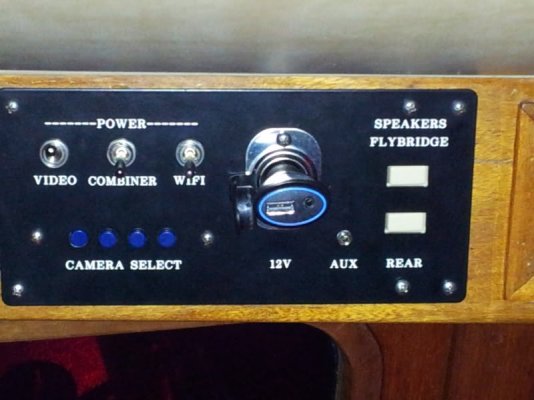Diverrob
Senior Member
Hi everyone!
Looking for a bit help on this Remote Battery Switch. I just finished upgrading my alternator to a Balmar 150A with an external regulator and of course all the extra stuff that goes along with an upgrade such as that. Along the way I decided to combine my thruster battery into my house bank. The theory on this was that the thrusters are only used leaving or coming back alongside (normally) and I wanted to increase my house bank so it seemed like a simple decision. The one thing I did not consider is the draw and subsequently the drop in voltage when using both bow and stern together. My voltage drops to the point where some of my electronics will shutdown and I get alarms on other systems, so... What I was thinking was to add a remote battery switch like the one in the link so I can isolate the thruster bank when I know I’m going to use them and then combine back to the house after I’m done. So I guess I’m just looking for some opinions on if this is a decent idea before I add something and regret it. Thanks, love the forum and have learned a lot.
Rob
https://www.bluesea.com/products/7700/ML-RBS_Remote_Battery_Switch_with_Manual_Control_-_12V_DC_500A
Looking for a bit help on this Remote Battery Switch. I just finished upgrading my alternator to a Balmar 150A with an external regulator and of course all the extra stuff that goes along with an upgrade such as that. Along the way I decided to combine my thruster battery into my house bank. The theory on this was that the thrusters are only used leaving or coming back alongside (normally) and I wanted to increase my house bank so it seemed like a simple decision. The one thing I did not consider is the draw and subsequently the drop in voltage when using both bow and stern together. My voltage drops to the point where some of my electronics will shutdown and I get alarms on other systems, so... What I was thinking was to add a remote battery switch like the one in the link so I can isolate the thruster bank when I know I’m going to use them and then combine back to the house after I’m done. So I guess I’m just looking for some opinions on if this is a decent idea before I add something and regret it. Thanks, love the forum and have learned a lot.
Rob
https://www.bluesea.com/products/7700/ML-RBS_Remote_Battery_Switch_with_Manual_Control_-_12V_DC_500A

